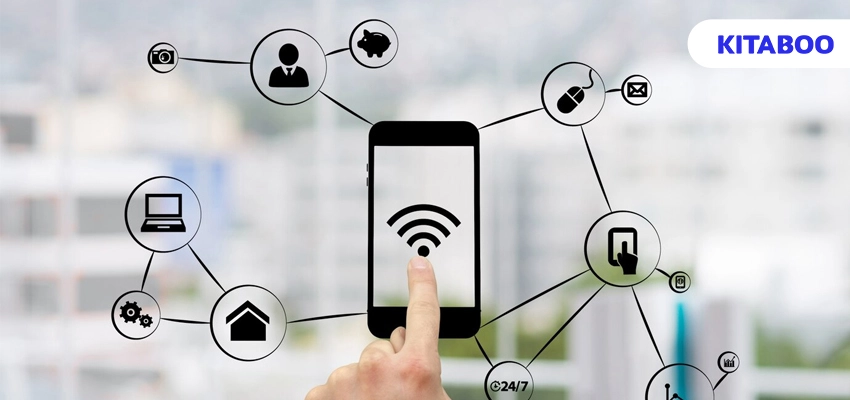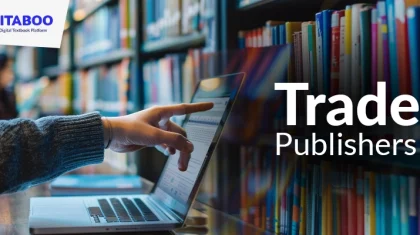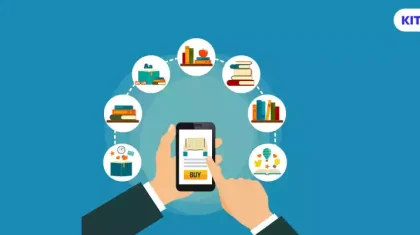
Inclusive Learning: The Impact of Multi-Device Accessibility in Higher Education eBooks
Summarize this blog with your favorite AI:
The awareness pertaining to diversity and inclusion is rising, and for a good cause. For the world to collectively benefit from the gifts of education, all the students alike should receive equitable opportunities to gain knowledge.
Additionally, diversity and inclusion initiatives create a sensitizing environment in the classrooms at an early age. It enhances student’s exposure to the diverse cultures, capabilities, and perspectives of their peers, giving them a more holistic understanding of the world.
Since education today has become digital-centric, eBooks have taken center stage in being the primary learning material. It is of extreme benefit to students of all types of multi-device accessibility.
It is made available to all sorts of learning materials to promote inclusive learning, whether on-premises or off-premises. It is possible to use digital textbook platforms like KITABOO that enable high-end features,
Let’s understand how multi-device accessibility enables an inclusive environment for higher education.
Table of Contents
I. The Essence of Inclusive Learning
II. How Multi-Device Accessibility of eBooks Impacts Inclusive Higher Education
- Device Use Patterns
- Goal-Oriented Learning
- Comprehensive Learning Experiences
- Enhancement in Learning Effectiveness
- Versatility in Education
- Expansion in Pedagogies
III. Taking Higher Education to The Next Level with Top-Notch eBooks
The Essence of Inclusive Learning
According to a report published by Diversity for Social Impact, an important number came to light: the rate of graduation was 6% higher for inclusive classrooms as compared to regular classrooms. This statistic alone highlights the importance of enhancing inclusivity in classrooms in order to improve not just learning outcomes but the overall success of education as well.
Making education equitable and easily accessible for all students in a classroom empowers students to compete with each other in a healthy manner and on a level playing field. Furthermore, there is more encouragement for empathy and peer respect and lower levels of social anxiety among students with special needs.
How Multi-Device Accessibility of eBooks Impacts Inclusive Higher Education
The impacts of multi-device compatibility of higher education eBooks are multifaceted on the level and efficacy of inclusivity in a classroom. The six major impacts are highlighted below:
1. Device Use Patterns
eBooks that are developed as compatible with a variety of devices enable students to access them with specific intents. Students in the higher grades typically all have mobile phones, which they use to check eBooks for highly specific information quickly.
On the other hand, the same eBook, when accessed on a tablet, can deliver a more immersive learning experience on a larger screen. This can prove to be more suitable for the learners who require assistance of various kinds to be at par with others.
Students can then access the same eBooks on their computers to manage the information they learn or collect from them.
2. Goal-Oriented Learning
Each student has their own goals, from picking up an eBook and learning from it. For students with learning difficulties, these goals could vary vastly from the majority of their peers. Enabling multi-device functionality on eBooks enables goal-oriented learning for students with special needs.
The experiences can be designed to be transferable across and between devices to allow students to continue their learning without losing sight of their goals, no matter which devices they currently have at hand. This cross-device compatibility thus enables inclusive eBook experiences that are well-aligned with the goals.
3. Comprehensive Learning Experiences
Using the same eBook on multiple devices can open up vast possibilities for enhancing learning experiences and reinforcing learning in creative ways. This is especially helpful for students with special needs who require extra effort to remain on par with their peers.
Educators can leverage eBooks that are cross-operational across a variety of devices to create high-quality learning experiences. Educators can combine the use of a variety of devices to deliver optimum learning and maximize the output of the information contained in the eBooks.
For example, students can use annotations on their tabs while referring to the whiteboard lesson of the same eBook being taught in the classroom. This is especially beneficial for students with special needs.
4. Enhancement in Learning Effectiveness
The digital nature of education has already managed to change the learning habits of the modern student. Leveraging a mix of digital devices to deliver learning on the spot significantly enhances the effectiveness of the curriculum.
For example, educators can leverage the power of centralized eBook access and link it across devices.
As and when a teacher makes changes to the distributed eBook learning materials, the students promptly receive notifications about the update notifications on their personal mobile phones. The students can then use their personal devices to check the updates and incorporate them into their exercises quickly.
5. Versatility in Education
Enabling eBook compatibility across a variety of devices enhances the flexibility of education and helps save time. It removes the necessity for students to be present at a physical location to access eBooks from the designated device.
The ones that benefit from this functionality are the students with physical mobility issues. They can access eBooks anywhere and through any device that they have access to. It gives them an opportunity to connect with other eBook users, collaborate, and synchronize their learning with that of the entire classroom.
6. Expansion in Pedagogies
In addition to enabling the use of eBooks and making their corresponding functionalities transferable between devices, educators need to amp up their strategies. The pedagogies and education systems need to evolve in order to create an inclusive environment that facilitates equitable learning for everyone.
Novel pedagogies need to be flexible, the learning resources designed for customizations, and the resources made accessible for all. By using a mix of devices and pedagogies, it is possible to completely transform a rigid classroom education into a dynamic learning environment.
Taking Higher Education to The Next Level with Top-Notch eBooks
eBooks have thoroughly enhanced the accessibility of education by improving the distribution of learning resources. Any willing student can get access to relevant eBooks, even for no cost, as long as they have access to reading devices and the internet.
To enable multi-device accessibility towards inclusion initiatives, KITABOO empowers educators with versatile eBook publishing and education platforms. The platform is laced with features like eBook readers, online spaces for students to gather and learn, and even a full-fledged digital education platform where everything pertaining to a classroom can be easily managed.
KITABOO is helping bring inclusivity into education by enabling educators to create versatile eBooks and distribute them efficiently. To learn more about KITABOO’s capabilities, visit the website.
Discover how a mobile-first training platform can help your organization.
KITABOO is a cloud-based platform to create, deliver & track mobile-first interactive training content.



